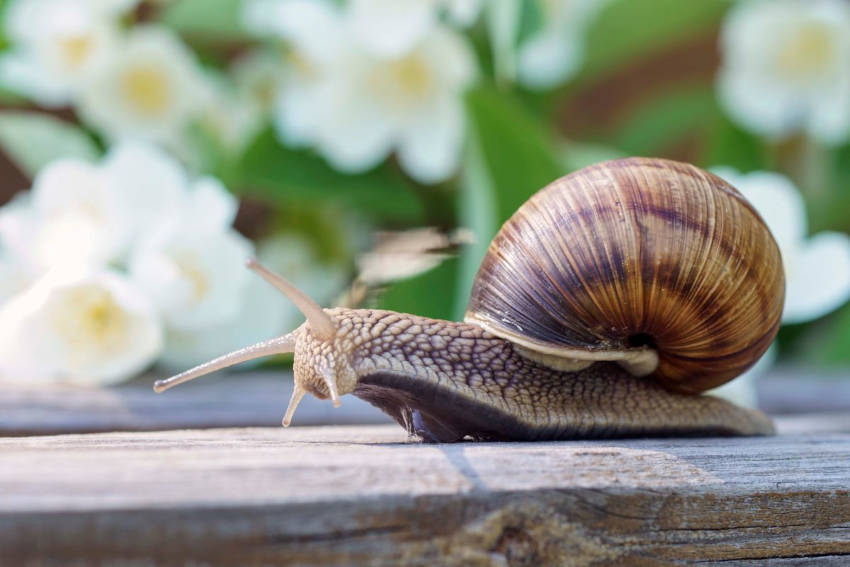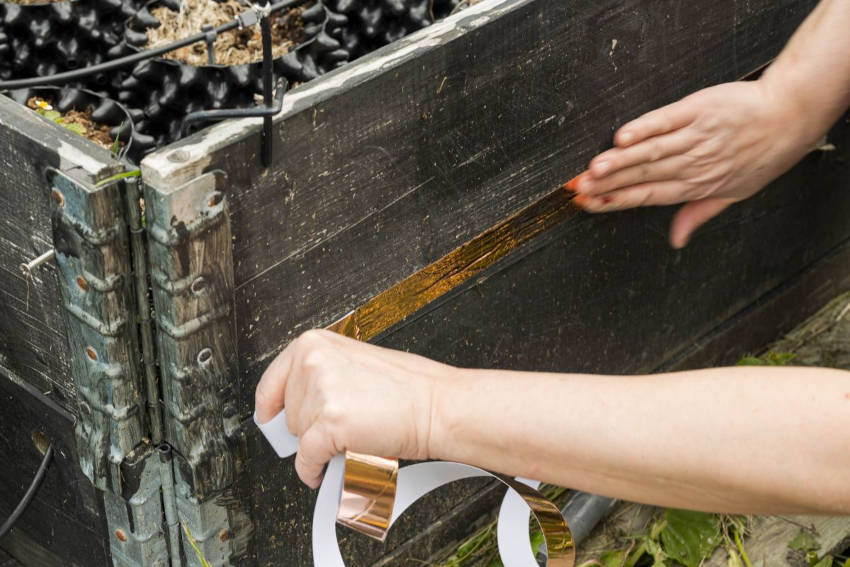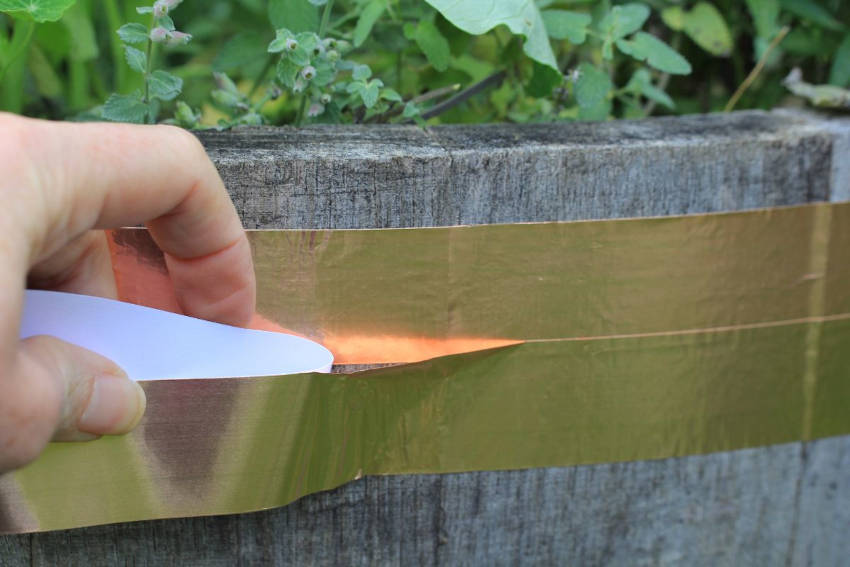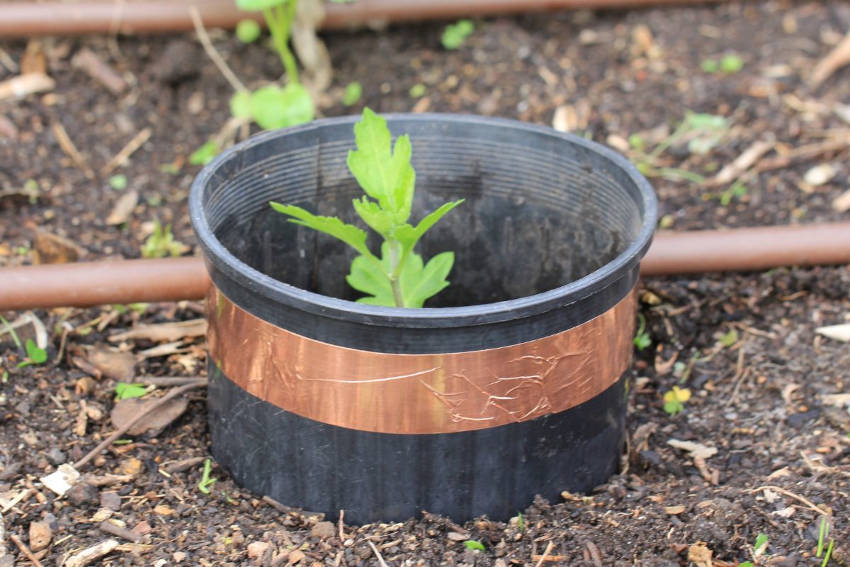Slugs and snails have often been voted the most irritating of all garden pests. While they do have some benefits for the garden, snails and slugs can cause significant damage to young and established plants alike, ruining their appearance or even devouring entire seedlings overnight.
Many methods of controlling these molluscs have been tried over the years. These include chemical-based slug pellets (not recommended if you have pets, children or wildlife visiting your garden), beer traps, egg shells, wool, sawdust, coarse grit, nematodes, organic slug pellets, and even hand removal by torchlight when slugs and snails are at their most active. The effectiveness of some of these methods has been proven, while others are up for debate. All have advantages or disadvantages; in most gardens using a combination of a few different methods will help to keep mollusc populations under control.
Copper tape is an environmentally responsible method of control that has gained in popularity over the years, particularly for plants grown in containers or to protect young seedlings. The self-adhesive tape is applied around pots or beds and acts as a barrier to deter molluscs.
How Does it Work?
Molluscs appear to dislike copper. It is thought that it gives them a small electric shock and some people have even wired up a small current to their tape! However, the more likely explanation (thankfully for those of us that don’t want to create mini electric fences in the garden) is that the copper reacts with the slime and produces a compound similar to copper sulphate, which slugs and snails hate. This is partly because the copper interferes with their circulatory systems. Humans use iron-based haemoglobin to carry oxygen around their body; molluscs use a copper-based carrier known as haemocyanin.
Other possible reasons for slugs and snails not liking copper include that it slows down their production of slime, limits how much they can eat, and harms their ability to reproduce.
How to Use
The tape should be applied around the circumference of a pot. It has a sticky backing, and this should be applied to a clean, dry surface and pressed down firmly. You may wish to use staples or tacks if you are applying it to a rough surface such as wood. You can also use the tape to protect young plants. If you cut a piece of PVC pipe or remove the bottom from a plastic pot and sink the bottom half around your plant, you can then apply the copper tape around the top of the pot.
Trials have shown that to have the best possible effect a wide strip of copper tape is best. If you find that a single band isn’t an effective deterrent, use a double band to increase the width.
Cut back any overhanging foliage or branches that may act as a ‘bridge’ between the outside of the taped area and the plants you want to protect.
Advantages of Copper Tape
- The copper tape is fully environmentally friendly and will not kill other wildlife. It is also not toxic so won’t harm small children or pets, as regular slug pellets may if ingested.
- The copper tape does not kill the molluscs and may not even harm them if they do not linger on it too long. It merely acts as a barrier that they do not enjoy crossing. Given what we know about the positive role that slugs and snails can play in the garden, and the role they have in the garden food chain, this is probably a good thing. Also, they are living things after all!
- It is easy to apply and even enhances the appearance of containers if done in a tasteful way. Some users even use heavy duty decorative scissors to create a decorative edge to their tape. Eventually, the tape should become greener as the copper ages so it will become less noticeable.
- It is long-lasting. Unlike things like slug pellets or beer traps which will need frequent applications, copper tape should last for at least a couple of years.
- It is low maintenance. Collecting slugs and snails by torchlight at night has to be one of the most time-consuming methods of mollusc control! Refilling beer traps and reapplying slug pellets can also be time-consuming and quite costly.
Disadvantages
- It doesn’t kill the slugs and snails. While this can be seen as a positive, as discussed above, it does mean the marauding molluscs are free to munch on other plants.
- It is not suitable to use on a large scale and is best used on containers or raised garden beds, or to protect individual plants when they are young and at their most vulnerable.
- It can be difficult to stick to rough surfaces, such as wooden railway sleepers used for raised beds. Use staples or tacks to hold the tape in position in these situations.
- The tape is more expensive than some other snail control products. Weigh up the investment over a couple of years compared with shorter term solutions such as pellets, which need to be replaced frequently, or your own time spent setting and replacing traps.
- It may not be 100% effective, but then no slug or snail control method is (which is why the topic inspires such a passionate debate amongst gardeners). Some people have reported excellent results using copper tape, while others, possibly because they are using a thin band of tape, are less impressed.
All in all, copper tape is a particularly good solution for the environmentally-friendly gardener who has containers or a few vulnerable vegetable seedlings or border plants that they want to protect from slugs and snails.









